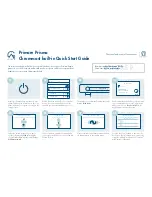
User’s Guide OctaMic XTC
© RME
53
22.4 DS - Double Speed
When activating the
Double Speed
mode the OctaMic XTC operates at double sample rate. The
internal clock 44.1 kHz turns to 88.2 kHz, 48 kHz to 96 kHz. The internal resolution is still 24 bit.
Sample rates above 48 kHz were not always taken for granted, and are still not widely used
because of the CD format (44.1 kHz) dominating everything. Before 1998 there were no re-
ceiver/transmitter circuits available that could receive or transmit more than 48 kHz. Therefore a
work-around was used: instead of two channels, one AES line only carries one channel, whose
odd and even samples are being distributed to the former left and right channels. By this, you
get the double amount of data, i. e. also double sample rate. Of course in order to transmit a
stereo signal two AES/EBU ports are necessary then.
This transmission mode is called
Double Wire
in the professional studio world, and is also
known as
S/MUX
(Sample Multiplexing)
in connection with the ADAT format.
Not before February 1998, Crystal shipped the first 'single wire' receiver/transmitters that could
also work with double sample rate. It was then possible to transmit two channels of 96 kHz data
via one AES/EBU port.
But
Double Wire
is still far from being dead. On one hand, there are still many devices which
can't handle more than 48 kHz, e. g. digital tape recorders. But also other common interfaces
like ADAT or TDIF are still using this technique.
Because the ADAT interface does not allow for sampling frequencies above 48 kHz (a limitation
of the interface hardware), the OctaMic XTC automatically uses
Sample Multiplexing
in DS
mode. One channel's data is distributed to two channels according to the following table:
Original 1 2 3 4 5 6 7 8
DS Signal
Port
1/2
1
3/4
1
5/6
1
7/8
1
1/2
2
3/4
2
5/6
2
7/8
2
As the transmission of double rate signals is done at standard sample rate (Single Speed), the
ADAT outputs still deliver 44.1 kHz or 48 kHz.
22.5 QS – Quad Speed
Due to the small number of available devices that use sample rates up to 192 kHz, but even
more due to a missing real world application (CD...), Quad Speed has had no broad success so
far. An implementation of the ADAT format as double S/MUX (S/MUX4) results in only two
channels per optical output. Therefore in Quad Speed mode the OctaMic XTC is limited to 4
channels at the ADAT outputs.
The AES outputs provide 192 kHz as Single Wire only.
Summary of Contents for OctaMic XTC
Page 5: ...User s Guide OctaMic XTC RME 5 User s Guide OctaMic XTC General ...
Page 12: ...12 User s Guide OctaMic XTC RME ...
Page 13: ...User s Guide OctaMic XTC RME 13 User s Guide OctaMic XTC Usage and Operation ...
Page 27: ...User s Guide OctaMic XTC RME 27 User s Guide OctaMic XTC Inputs and Outputs ...
Page 33: ...User s Guide OctaMic XTC RME 33 ...
Page 37: ...User s Guide OctaMic XTC RME 37 User s Guide OctaMic XTC Class Compliant Mode ...
Page 42: ...42 User s Guide OctaMic XTC RME ...
Page 43: ...User s Guide OctaMic XTC RME 43 User s Guide OctaMic XTC Technical Reference ...
Page 58: ...58 User s Guide OctaMic XTC RME 23 Block Diagram ...










































